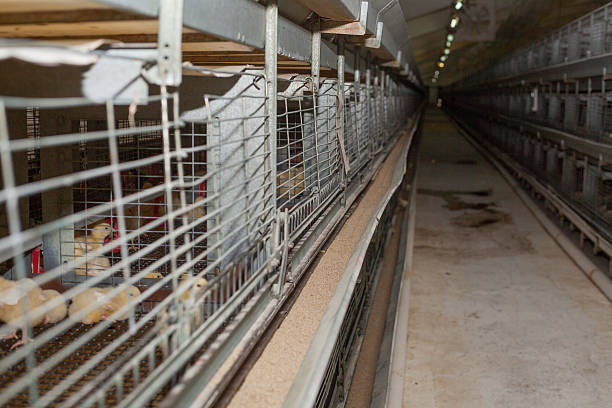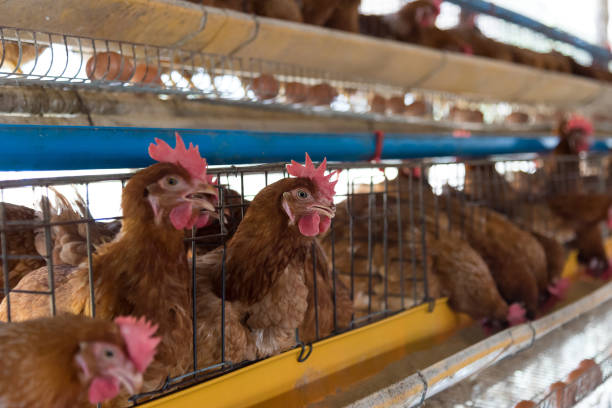Galvanized Battery Cages: Optimizing Poultry Farming in Africa
Galvanized Battery Cages: Optimizing Poultry Farming in Africa
Africa’s poultry industry is experiencing a period of dynamic growth, spurred by increasing demand for eggs and chicken meat. To meet this burgeoning need, farmers are continually seeking innovative and efficient farming methods. Among the various solutions available, galvanized battery cages are emerging as a popular choice, promising to optimize poultry farming practices across the continent. This article explores the benefits, implementation strategies, and overall impact of galvanized battery cages on the African poultry sector.
**Understanding Galvanized Battery Cages**
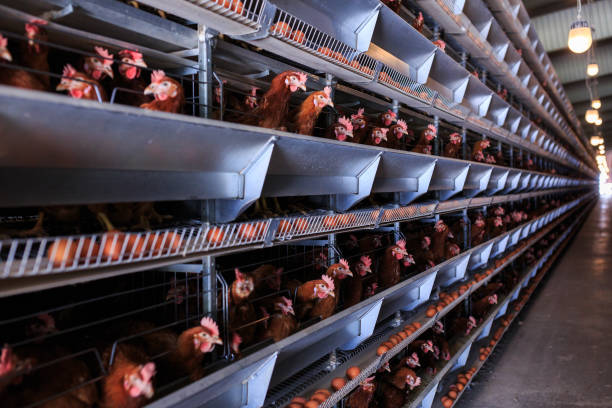
Galvanized battery cages are a type of housing system commonly used in poultry farming, primarily for egg-laying hens and broiler chickens. These cages are constructed from galvanized steel wire mesh, offering durability and resistance to corrosion. The galvanization process involves coating the steel with a layer of zinc, which protects against rust and extends the lifespan of the cages, particularly in humid or corrosive environments.
In a battery cage system, multiple cages are arranged in rows and tiers, maximizing the use of space within a poultry house. Each cage typically houses several hens or broilers, depending on the design and purpose. The cages are designed to provide adequate ventilation, easy access to feed and water, and efficient waste management.
**Benefits of Galvanized Battery Cages in African Poultry Farming**
The adoption of galvanized battery cages offers numerous advantages for poultry farmers in Africa, enhancing productivity, improving bird welfare, and promoting sustainable farming practices.
*Increased Productivity*: Galvanized battery cages contribute significantly to increased egg and meat production. The controlled environment within the cages allows farmers to closely monitor and manage the birds’ living conditions. This includes regulating temperature, humidity, and light exposure, which are critical factors for optimal growth and egg-laying performance. Additionally, the cages provide easy access to feed and water, ensuring that the birds receive consistent nutrition. The result is a higher rate of egg production and faster growth rates for broilers, leading to increased yields for farmers.
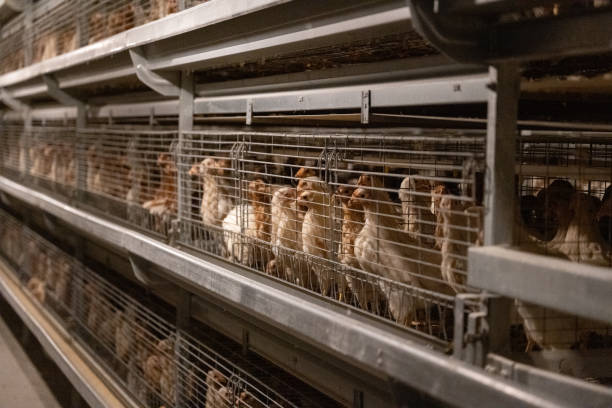
*Improved Bird Welfare*: Modern galvanized battery cages are designed with the welfare of the birds in mind. The cages provide adequate space for hens to stand, turn around, and stretch their wings. The wire mesh floors are designed to minimize foot injuries, and the cages are typically equipped with features like nipple drinkers and feed troughs that facilitate easy access to essential resources. Furthermore, the controlled environment reduces the risk of disease outbreaks and minimizes stress levels in the birds.
*Efficient Space Utilization*: One of the primary advantages of battery cage systems is their ability to maximize space utilization. By arranging cages in multiple tiers, farmers can house a larger number of birds within a smaller area compared to traditional free-range or deep-litter systems. This is particularly beneficial in regions where land is scarce or expensive. The high-density housing allows farmers to increase their production capacity without requiring additional land, making it a cost-effective solution for scaling up poultry operations.
*Enhanced Disease Control*: Battery cage systems facilitate better hygiene and disease control. The elevated cages prevent the birds from coming into direct contact with their droppings, reducing the risk of bacterial and parasitic infections. The controlled environment also minimizes exposure to external pathogens, such as wild birds and rodents, that can carry diseases into the poultry house. Additionally, the ability to easily clean and disinfect the cages helps to maintain a sanitary environment, further reducing the likelihood of disease outbreaks.
*Reduced Labor Costs*: Galvanized battery cages automate many of the tasks associated with poultry farming, such as feeding, watering, and egg collection. Automated feeding systems deliver feed directly to the cages at predetermined intervals, ensuring that the birds receive consistent nutrition without the need for manual labor. Automated watering systems provide a constant supply of fresh water, while automated egg collection systems gather eggs from the cages and transport them to a central collection point. These automated systems significantly reduce labor costs, allowing farmers to focus on other essential aspects of their operations, such as monitoring bird health and managing their finances.
*Improved Egg Quality*: Battery cages are designed to maintain the cleanliness of eggs. The eggs roll away from the hens as soon as they are laid, preventing them from being soiled by droppings or damaged by the hens. This results in cleaner, higher-quality eggs that are more appealing to consumers and command a higher price in the market. Additionally, the controlled environment within the cages helps to minimize fluctuations in temperature and humidity, which can negatively impact egg quality.
*Durability and Longevity*: Galvanized steel is highly resistant to corrosion, making galvanized battery cages a durable and long-lasting investment. The galvanization process protects the steel from rust and other forms of degradation, ensuring that the cages can withstand the harsh conditions often encountered in poultry houses, such as high humidity and exposure to corrosive substances. This durability translates to a longer lifespan for the cages, reducing the need for frequent replacements and minimizing long-term costs for farmers.
**Implementation Strategies for Galvanized Battery Cages in Africa**
To maximize the benefits of galvanized battery cages in African poultry farming, farmers need to adopt effective implementation strategies that address the specific challenges and opportunities of the local context.
*Proper Cage Design and Construction*: It is essential to select galvanized battery cages that are specifically designed for the needs of the local environment and the type of birds being raised. Cages should provide adequate space, ventilation, and access to feed and water. The wire mesh should be smooth and free of sharp edges to prevent injuries to the birds. The cages should also be easy to clean and disinfect.
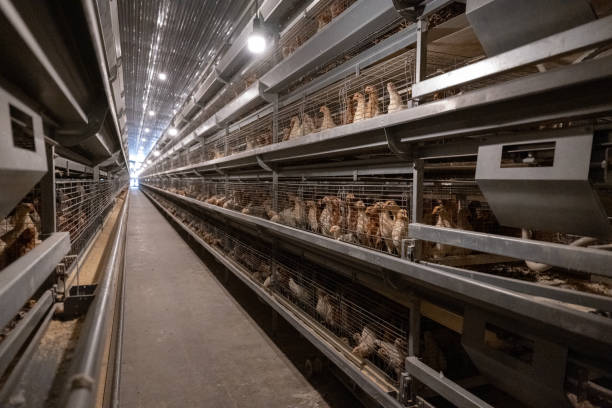
*Environmental Control*: Maintaining a controlled environment within the poultry house is crucial for optimizing bird performance. This includes regulating temperature, humidity, and light exposure. Farmers should install ventilation systems to ensure adequate air circulation and remove stale air. Heating and cooling systems may be necessary in regions with extreme temperature fluctuations. Lighting systems should be programmed to provide the optimal photoperiod for egg production or broiler growth.
*Nutrition Management*: Providing the birds with a balanced and nutritious diet is essential for maximizing their health and productivity. Farmers should work with poultry nutritionists to develop feed formulations that meet the specific needs of their birds. The feed should be of high quality and free from contaminants. Farmers should also ensure that the birds have constant access to fresh, clean water.
*Disease Prevention and Control*: Implementing a comprehensive disease prevention and control program is critical for minimizing the risk of disease outbreaks. This includes vaccinating the birds against common poultry diseases, practicing strict biosecurity measures to prevent the introduction of pathogens into the poultry house, and regularly monitoring the birds for signs of illness. Farmers should also work with veterinarians to develop a treatment plan for any diseases that may occur.
*Waste Management*: Effective waste management is essential for maintaining a clean and sanitary environment within the poultry house. Farmers should implement a system for collecting and disposing of manure in a timely and environmentally responsible manner. Composting, anaerobic digestion, and land application are some of the methods that can be used to treat poultry manure.
*Training and Education*: Providing farmers with adequate training and education is essential for ensuring the successful implementation of galvanized battery cages. Farmers should be trained on proper cage management techniques, environmental control, nutrition management, disease prevention and control, and waste management. They should also be educated on the importance of bird welfare and the principles of sustainable poultry farming.
**Impact of Galvanized Battery Cages on the African Poultry Sector**
The adoption of galvanized battery cages has the potential to transform the African poultry sector, contributing to increased food security, improved livelihoods, and sustainable economic growth.
*Increased Food Security*: By increasing egg and meat production, galvanized battery cages can contribute to increased food security in Africa. Poultry products are an important source of protein and other essential nutrients, and increasing their availability can help to address malnutrition and improve public health.
*Improved Livelihoods*: Poultry farming can provide a valuable source of income for smallholder farmers in Africa. By adopting galvanized battery cages, farmers can increase their production and profitability, improving their livelihoods and reducing poverty.
*Sustainable Economic Growth*: The growth of the poultry sector can contribute to sustainable economic growth in Africa. Poultry farming creates jobs in related industries, such as feed production, processing, and marketing. It also stimulates demand for agricultural inputs, such as grains and oilseeds, supporting the growth of the agricultural sector.
*Empowerment of Women*: Poultry farming is often a significant source of income for women in Africa. Galvanized battery cages can help to empower women by providing them with the tools and resources they need to increase their productivity and profitability.
Galvanized battery cages represent a significant advancement in poultry farming technology with the potential to drastically improve the efficiency and sustainability of poultry production in Africa. While it requires a thoughtful and well planned approach for correct implementation, the rewards it offers in terms of optimized output, improved bird well-being, and greater profit margins are considerable. As the demand for poultry continues to rise throughout Africa, galvanized battery cages can play a crucial role in fulfilling these needs and bolstering the continent’s food security and economic advancement. By embracing these innovative farming methods, African poultry farmers can usher in an era of enhanced productivity, sustainability, and prosperity throughout the sector.




